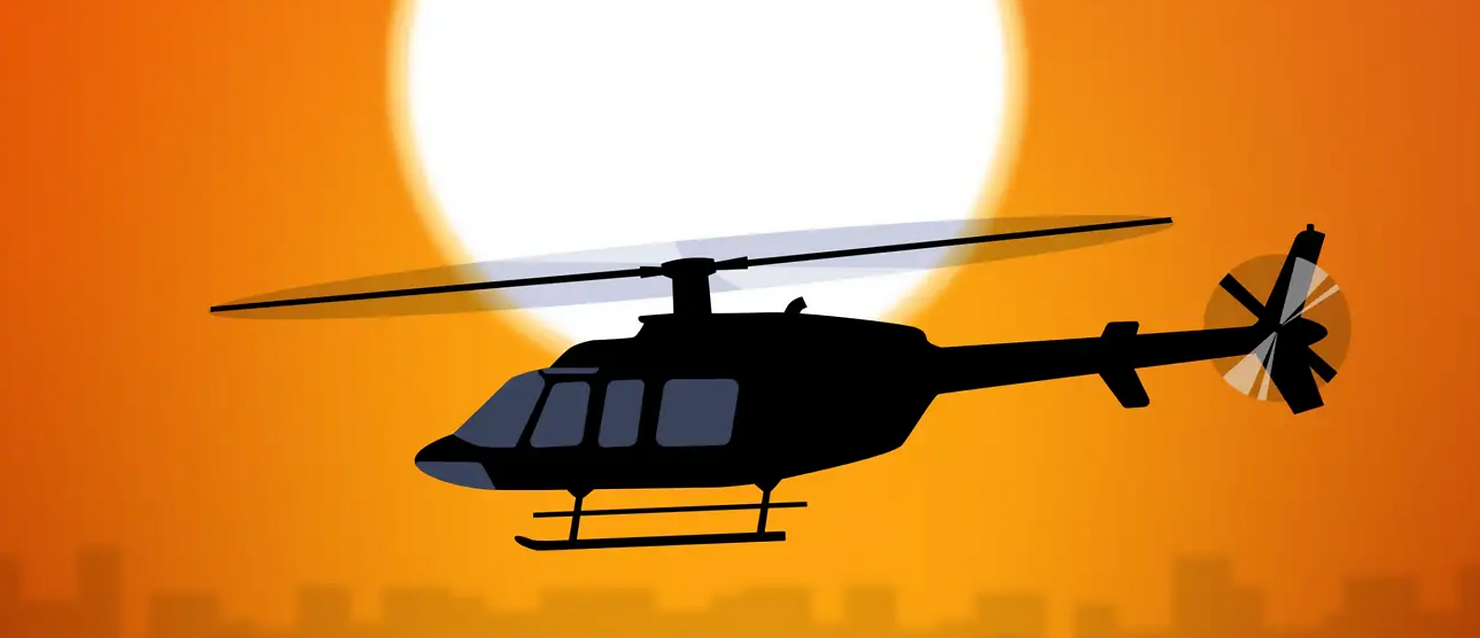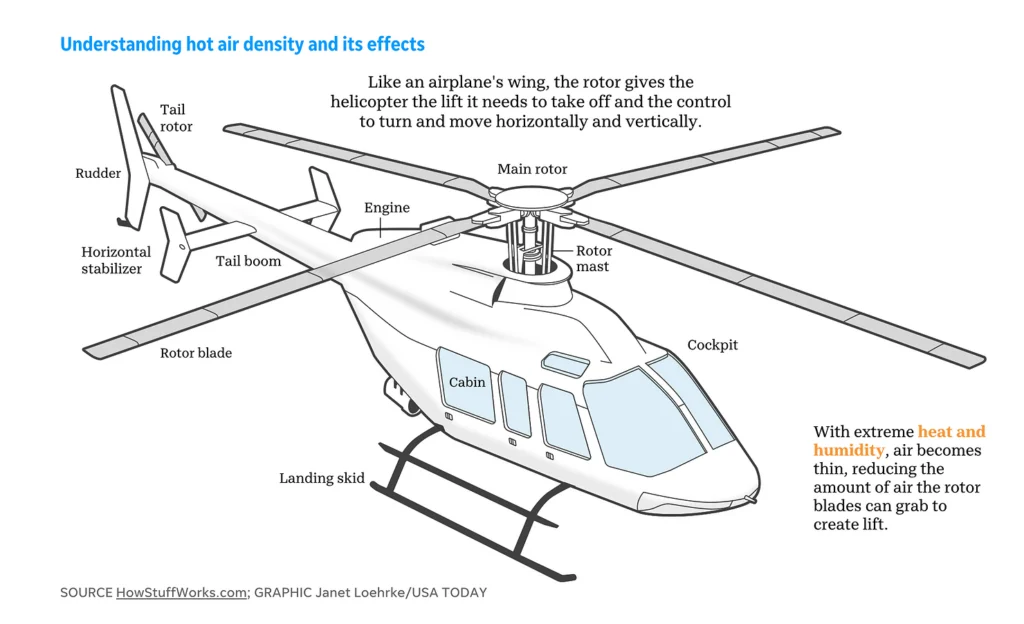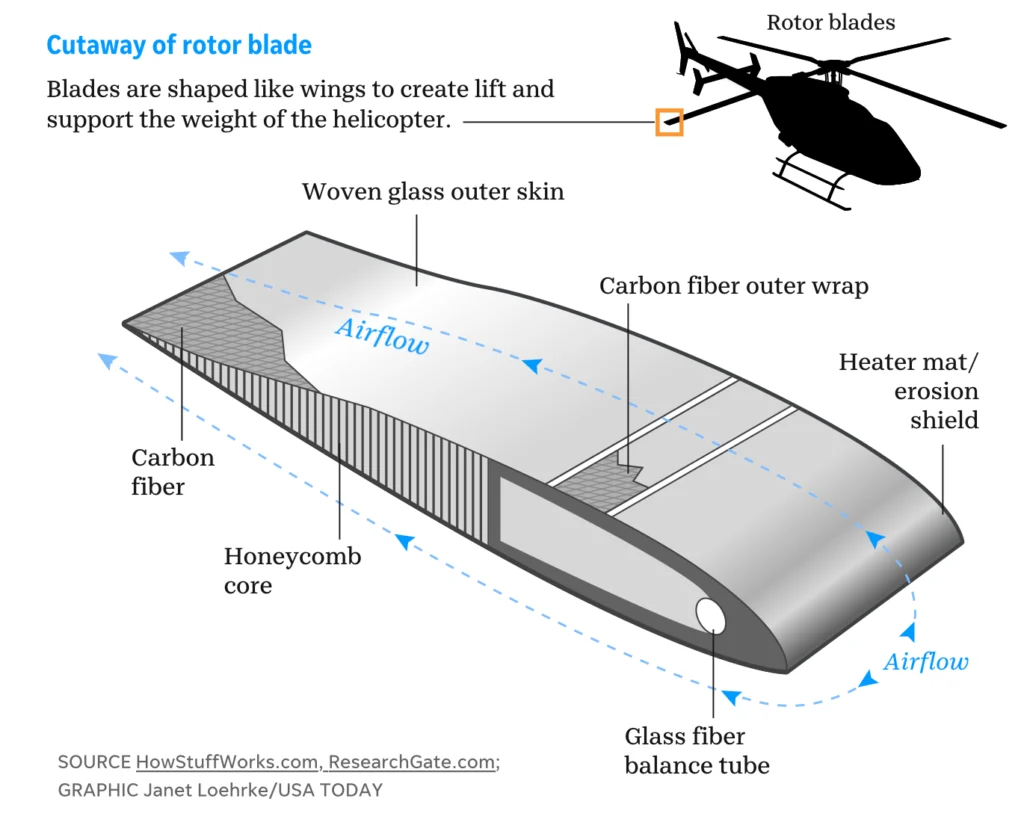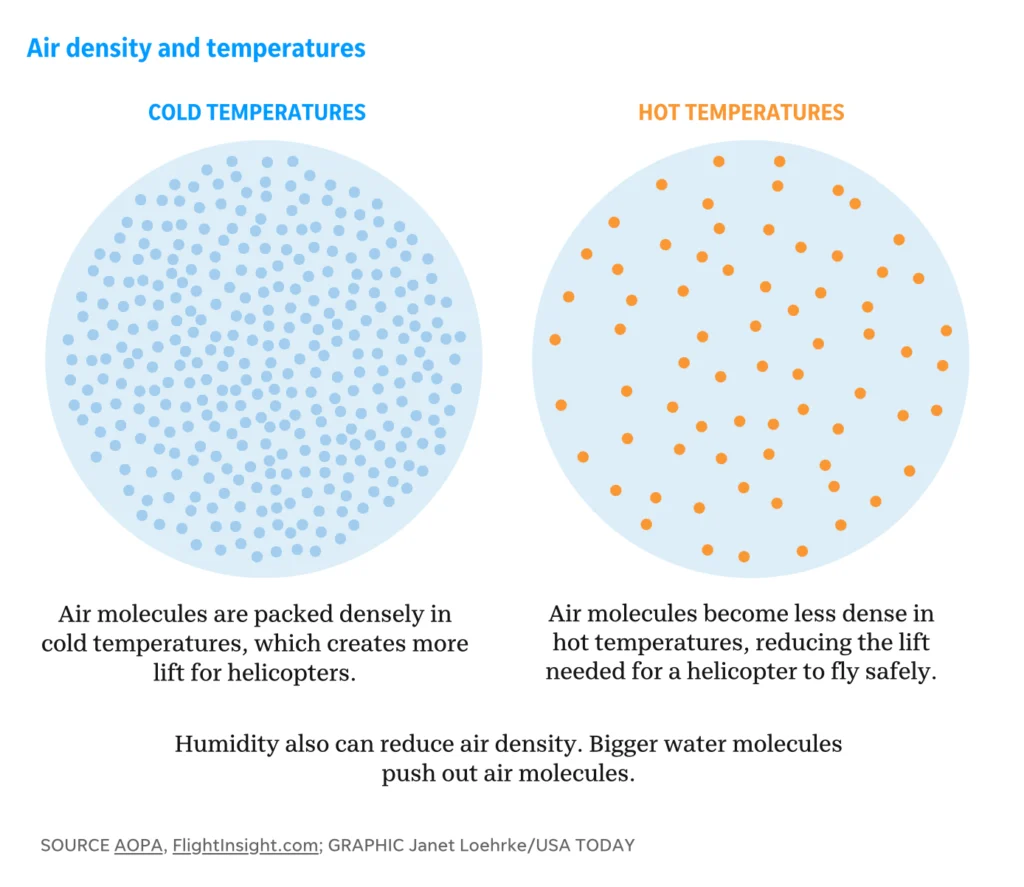Your cart is currently empty!
USA Today article explains why extreme heat can affect helicopter response to those in need
Rescue helicopters can’t fly in extreme heat. Graphics show you why.

George Petras & Janet Loehrke
USA TODAY
The hot weather that has been afflicting Americans in remote national parks is also grounding emergency helicopter flights that could rescue them.
That’s because helicopters can’t fly in temperatures above 120 degrees, USA TODAY reported.
Despite the triple-digit heat – or, more likely, because of the novelty or challenge of it – tourists keep coming to places like Death Valley National Park. They’re hiking or having their pictures taken next to a large thermometer at the visitor center.
One motorcycle rider died of heat exposure and another was hospitalized for severe heat illness after a group of bikers rode through the park July 6.
But if visitors are incapacitated by heat-related illness and need hospitalization, rescue helicopters may not be available.
Why can’t helicopters fly in hot weather?

Helicopters are fast, versatile aircraft. Rescuers use them because they can quickly reach injured people in difficult situations and carry them to hospitals.
But helicopters and airplanes operate in what’s called an environmental flight envelope – limits that include temperature, altitude, airspeed and load weight – that determine whether the aircraft can safely fly.

High temperatures affect air density. (Air expands when it’s heated and contracts when it cools.) When air molecules heat up, they move faster and move apart, which puts more space between them.

As helicopter blades spin, the airflow beneath the blades produce lift to counteract gravity, according to Cadence Design Systems. In thin air, blades produce less lift, which means more difficulty in taking off and maneuvering.
Heat also affects helicopter engines, which produce less power while taking in less-dense air.
Park rangers are warning visitors against taking risks in high temperatures. In Death Valley, for example, posted signs discourage hikes after 10 a.m. on hot days.
More recent articles

CommLink participates in networking, education and innovation at the Air Medical Transport Conference (AMTC) 2024 in Salt Lake City, Utah.
The Air Medical Transport Conference (AMTC) is an annual event focused on advancing the field of air medical transport. Organized by the Association of Air Medical Services (AAMS), AMTC brings together professionals from across the air medical industry, including flight crews, paramedics, emergency medical technicians (EMTs), nurses, pilots, communications specialists and administrators. CommLink Network proudly attends the…

USA Today article explains why extreme heat can affect helicopter response to those in need
Rescue helicopters can’t fly in extreme heat. Graphics show you why.

FAA Change in NOTAM Acronym Definition
Recent discussion have brought about the interest of Communications Specialists to understand that change in the Definition of the NOTAM acronym. In December 2021 the FAA announced that the former “Notice to Airmen” would now be “Notice to Air Missions.” In FAA order 7930.2S The FAA outlines the change: “The following changes are made to…